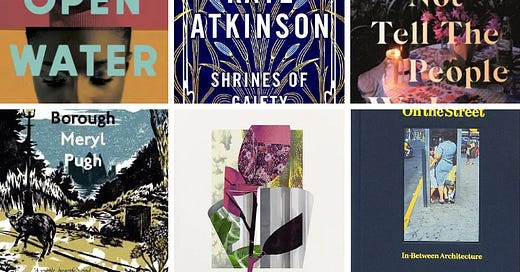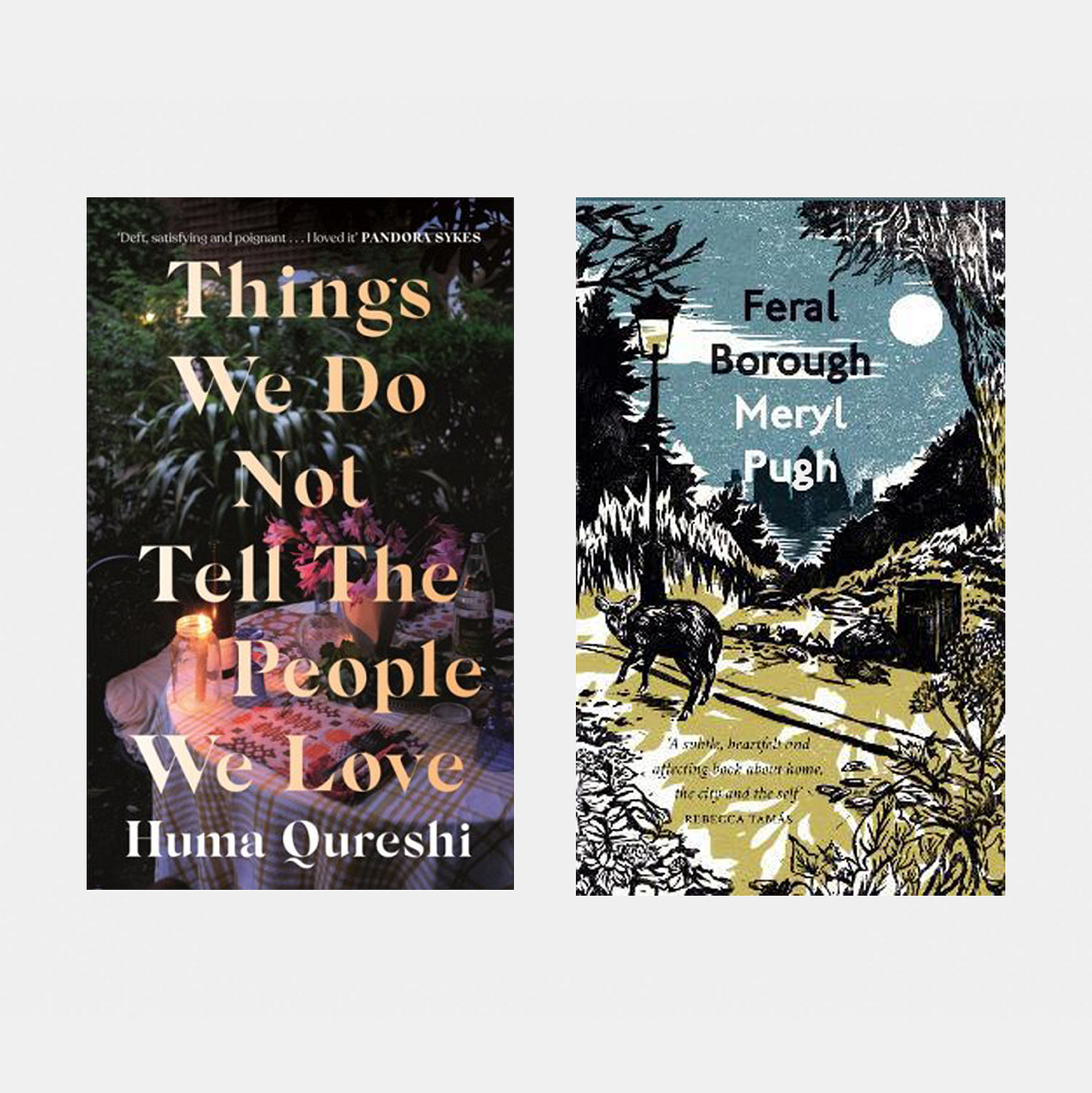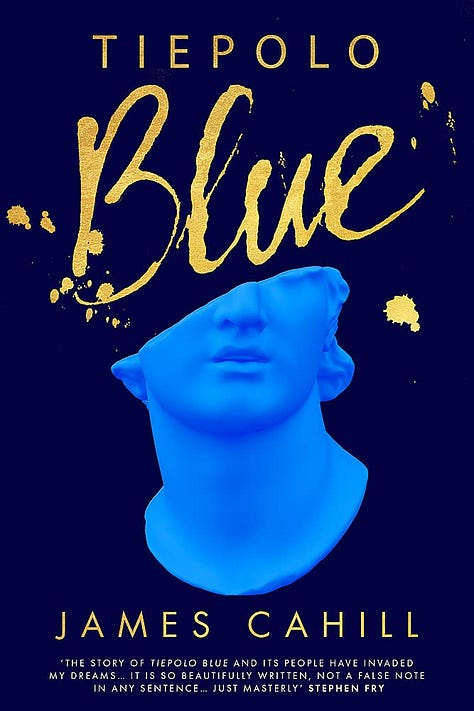

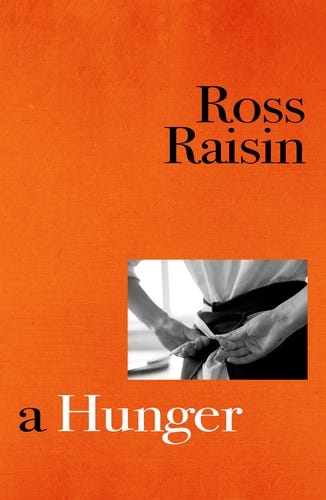
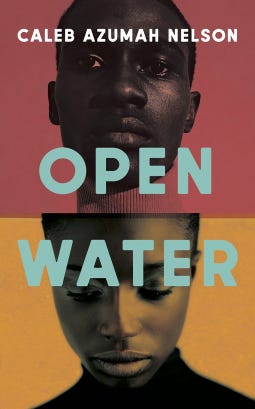
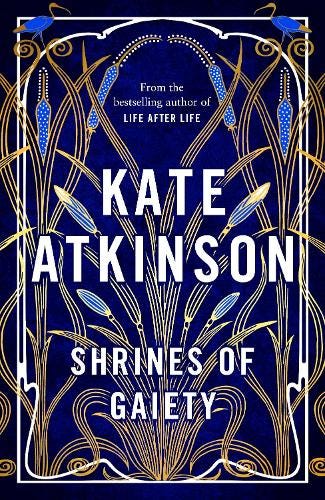
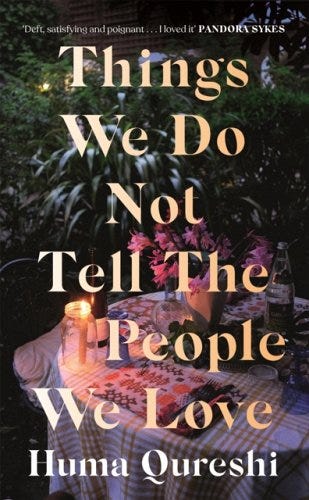
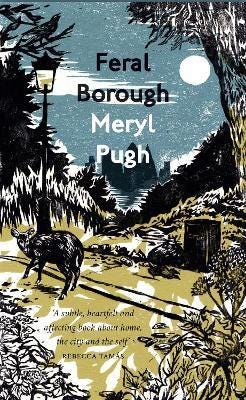

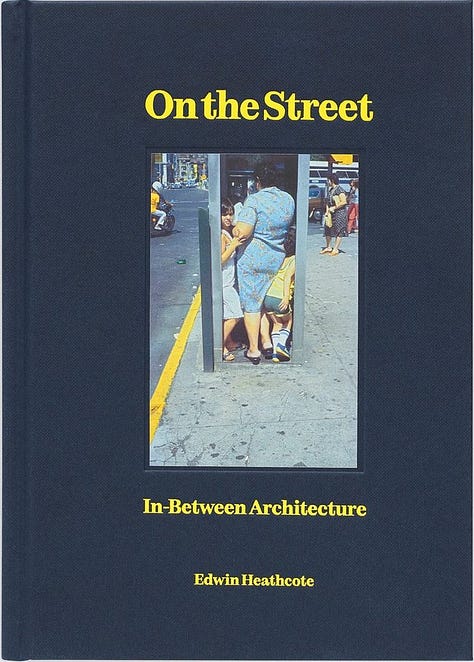
Last week we put together a list of some of our favourite London-themed non-fiction books of 2022.
For the second half of our literary gift guide we’ve got five of our favourite works of London-centric fiction for you. Plus, we managed to rope in two of our favourite London authors, Matthew Turner and Gemme Seltzer, to name some of their favourite London books (both fiction and non-fiction), so there should be at least one idea across these two issue that can go on your Christmas list or make a great present for someone you know.
Just like last week, there’s no Amazon links in here. Instead we’ve linked to Bookshop.org and, where we can, we’ve also provided a link to buy from Bookseller Crow. They’re our favourite independent London bookseller, so if you don’t already have a local shop you like to support then you could do worse than buy from them.
There Are More Things - Yara Rodrigues Fowler
There are many reasons to admire Yara Rodrigues Fowler. Her first novel, Stubborn Archivist, was longlisted for the Dylan Thomas Prize and the Desmond Elliot Prize; and her second, published in April of this year, was shortlisted for the Orwell Prize for Political Fiction.
Also, she created a Tinder chat bot that encouraged young people to vote, and she has a tradition of tweeting photos of herself bathing in her own books.
There Are More Things is essentially the story of two women with Brazilian roots, who are sharing a flat in south London in 2016. Melissa is queer, born in London but raised by a Brazilian single mother, and she works for a “communication policy PR strategy online media consultancy”. Her flatmate Catarina was born to a middle-class political family in Brazil and is working on her PhD.
A bit like Rebecca Watson’s Little Scratch (one of our 2021 fiction picks) There Are More Things pulls us into the lives of Catarina and Melissa through their daily routines and the way they traverse London. From university campuses to offices, from Tottenham Court Road to activist meetings and (inevitably) the contents of their phones.
So, yes, you could file this in the ‘how it really feels to be a millennial in London’ section, but Fowler does a lot more than just paint a picture of modern ennui. Instead she layers up those everyday interactions into something bigger, showing how they cause the two women to influence each other and setting their personal evolution against a historical backdrop that adds an epic feel to the novel, which, by the end, becomes an inspiring call to arms.
Open Water - Caleb Azumah Nelson
Caleb Azumah Nelson’s debut novel (which was recently won Waterstone’s Best Paperback of 2022) is also set in south east London in the mid-2010s and also centres on the friendship between two 20-somethings. This time though it’s two Black British artists; a female dancer and a male photographer (neither of them are named), and this time the pair fall in love.
Also like Fowler, Nelson enjoys playing around with language and form and tells the story of his two protagonists in under 200 pages and entirely in the second person. This creates a real sense of momentum and intensity that makes you immediately invested in the fate of this nameless couple, so much so that the book almost feels voyeuristic at times.
Azumah Nelson is a photographer as well as a writer, and he uses his very visual and cinematic sensibility to elevates a series of set pieces (like a party, and a visit to Shake Shack), into a poetic examination of what it means to connect with another human being, and what it takes to do that in a world that it all too often racist, violent and oppressive.
Pick up a signed copy from Bookseller Crow
Shrines of Gaiety - Kate Atkinson
Shrines of Gaiety might be the most hyped book on this list. After Atkinson’s 1995 debut, Behind the Scenes at the Museum and 2013’s Life After Life, expectations (and marketing budgets) were high for this one.
If you’ve read any of those previous books then you’ll know Atkinson likes to populate her stories with a whole cast of characters, and Shrines of Gaiety doesn’t break that trend. Most reviews of the book will use the word ‘sprawling’ at some point and with good reason. While the books is set in post-World War I Soho, it almost feels like a Dickens serial (if Dickens had stuck around long enough to read Patrick Hamilton and Evelyn Waugh) with a teeming ensemble scurrying around Soho and Covent Garden creating all sorts of skullduggery.
Shrines of Gaiety’s central character is nightclub owner Nellie Coker, who is loosely based on the real life Kate Meyrick, the ‘Night Club Queen’ of 1920s London who served five prison sentences and who has already inspired a classic literary character: Brideshead Revisited’s Ma Mayfield.
Like Meyrick, Coker has sent a bit of time in Holloway and is now returning to her nightlife empire, which she has entrusted to her six offspring. At the same time, the police are sniffing around because dead girls keep being pulled out of the Thames, plus there’s MPs and celebrities to schmooze and a former librarian intent on infiltrating Nellie’s world.
With its whiplash pace and broad canvas that roams from seedy back alleys to grand townhouses (via an orgy or two), Shrines of Gaiety is the stylistic opposite of the intimate, concentrated Open Water, but that doesn’t make it any less satisfying, mainly because Atkinson is so great at bringing the flappers, gangsters, dancing girls and serial killers of 1920s London to life in all their post-traumatic, hedonistic glory.
A Hunger - Ross Raisin
Did you watch The Bear this year? Are you excited for the TV series based on last year’s Boiling Point? Then you’ll probably enjoy A Hunger from Ross Raisin.
Raisin’s previous books (including his debut God’s Own Country and the more recent A Natural) have largely featured young, working-class men who are driven to the violent outskirts of society through bad luck and even worse decisions. A Hunger differs slightly in that its main character is female and in her 50s, but that central theme of a personal battle against background to achieve something worthwhile is still very much there in the story of Anita, who has gone from caring for her mentally ill mother in a south London tower block to being the head sous chef at an upmarket London restaurant.
On the way to the top, Anita has married the controlling, passive aggressive Patrick, who she would probably have left years ago if it weren’t for their two kids and the fact that he’s suffered a couple of strokes. Oh, and he’s just been diagnosed with early onset dementia.
Are we making this book sound miserable? Because it’s not. Instead it is (just like The Bear and Boiling Point both managed to be) brutal and tender at the same time; especially when we go into the restaurant kitchen with Anita. The adrenaline rush of that life is rendered in careful, beautiful detail, making the contrast with the unhappy drudge of Anita’s home life even more stark.
A Hunger isn’t a barrel of laughs by any stretch, but it is a gorgeous examination of ambition and love and the sacrifices we have to make to achieve both.
Tiepolo Blue - James Cahill
James Cahill’s debut novel begins in the rarefied surroundings of Peterhouse College, Cambridge, but the action soon moves to south London (specifically Dulwich), when middle-aged professor of art history Don Lamb commits academic suicide by lambasting a Tracey Emin-esque art installation on Radio 4. After this shameful episode, Lamb is ousted from the college where he has spent almost his entire life and is found a role running the Brockwell Collection (a thinly disguised Dulwich Picture Gallery) by his academic mentor, the brilliantly-named Valentine Black.
If this all sounds a bit academic and arch, then you should know that once Lamb arrives in south east London, his life as a middle-aged bachelor scholar quickly unravels. A series of encounters and sometimes excruciating incidents submits the revered academic to a “mental rewiring” during which his carefully-repressed sexuality is unlocked by Ben, a young art student who knocks the dust off the professor via a tour of Soho and some Sensation-style art exhibitions (the book is set in 1994).
Lamb’s journey is not an easy one, and while you’re reading Tiepolo Blue it can occasionally feel like you’re in the middle of a queasy, unsettling dream - although not one that you necessarily want to wake up from. Even though there is a ‘slow car crash’ quality to Don Lamb’s second life, Cahill always manages to wrap it in an elegant and refined beauty, whether he’s writing about Baroque frescoes, gay saunas, Dulwich parks or the dive bars of Soho.
Coming up on Wednesday 👨🎤️
In our subscriber-only edition this week we’ve got an exclusive extract from the new book Marquee: The Story of the World’s Greatest Music Venue along with a quick interview with the book’s author, Robert Sellers.
If you want to find out what made Slash puke up backstage after Guns N’ Roses first ever UK gig then click the button:
Guest recommendations from Matthew Turner
Matthew Turner is Visiting Professor of Architecture and Visual Theory at the University of Bergen, and the author of Loom, which we featured in our fiction gift guide for 2021. Matthew also wrote this piece of short fiction exclusively for LiB back in April of this year.
His latest piece of short fiction, Still Life, has just been published by The London Magazine.
On the Street - Edwin Heathcote
There is a tendency for architectural and design writing to focus on the one off, the exclusive, be it a new building by a Starchitect or a limited edition candle holder. But what about the ubiquitous, the things that proliferate so wildly that we adapt our senses to miss them out?
Edwin Heathcote’s On the Street looks at benches, bollards, streetlights, signs, barriers, postboxes, phone booths as a language that frame London and other cities. They are cast as being vital to the experience of a city rather than something to be overlooked.
As places all over the world become more and more similar it’s these little bits of design that I look to first when travelling. Though often unkept, rugged, utilitarian, to me they are true sources of authenticity and intrigue. When I think of Kolkata, it’s not the temples I remember (I had seen enough of those), it the bins with a smouldering ropes lashed around them for lighting cigarettes. I can easily forget the taste of the beer I drank too much of in Prague, but it’s narrowest street with a traffic light so people didn’t bump into each when walking down it, will indelibly stay with me. It’s a relief to finally find someone that shares my enthusiasm.
Living Rooms - Sam Johnson-Schlee
Though this is not strictly a London book, London is the place where people tend to feel the full force of the precarity imposed upon them through living conditions and the property market itself. In Living Rooms Sam Johnson-Schlee looks at how our homes are decorated in a way to counteract these feelings of instability and enables us to look beyond its presence as a discrete unit of financial value in someone else’s spreadsheet. The home is captured beautifully and cryptically as a dream machine where we appear to be escaping market forces, while at the same time consuming in a way that embraces them.
Hilary Mantel once wrote ‘…all houses are haunted. The wraiths and phantoms creep under carpets and between the warp and weft of fabric, they lurk in wardrobes and lie flat under drawer-liners.” Sam would suggest these are not ghosts in the typical sense, that each object in the home is haunted by the labour that went into creating it, or the wider societal context that enabled it to end up in a living room: house plants and the slave trade, wallpaper patterns and colonialism, Ikea Furniture and the eradication of memory. You won’t look at your home in the same way ever again.
Guest recommendations from Gemma Seltzer
Gemma Seltzer is the author of the short fiction collection Ways of Living (which we spoke to her about at the start of this year) and she runs the Write & Shine programme of morning writing workshops. Their December festival (which takes place entirely via Zoom) kicks off on Wednesday.
Feryl Borough - Meryl Pugh
This is a wonderful hybrid book - part poetry, memoir and fiction. In a sequence of short chapters, Pugh pauses in pockets of green in Leytonstone, looks up at skylarks and down at pavements, thinks about friendship and family, grief and loss, woodpeckers and woodlands. An illuminating, inspiring piece of writing about Leytonstone and east London, Pugh holds up the city for us to witness in all its tiny, profound detail. It’s a book about city walking and the value of really noticing our immediate surroundings.
Things We Do Not Tell The People We Love - Huma Qureshi
This came out in 2021, but the paperback was this year so I think it counts! This gentle short story collection is about women’s interior lives, mothers, daughters, friends and the ways we never quite know other people. The protagonists are women of Pakistani heritage, with London as both backdrop and centre stage in their lives. Cities are places of refuge, connection and tender dreams.
And a couple of classics…
I go back to Girl, Woman, Other by Bernardine Evaristo for many reasons including the opening scene with the character Amma walking along the Southbank, noticing the early morning barges, buskers, and how the city holds for us so many memories.
And when I need a burst of London energy on the page, I turn to Patrick Hamilton’s Twenty Thousand Streets Under the Sky, a story of pubs, hopes, dreams and London streets.
5 little bits
In Saturday’s roundup we told you that the plans to turn the former Royal Mint into a new Chinese Embassy were in the process of being assessed. Well, Tower Hamlets Council has now refused the plans, following a unanimous vote. The development “would affect the safety and security’ of residents… cause harm to heritage assets, impact the quality of the area as a tourist destination and have an impact on local police resourcing” the council said.
A 58-year-old “wealthy Russian businessman” was arrested in London over the weekend “as part of a major operation”. The oligarch was apprehended at his “multi-million-pound residence by officers from the National Crime Agency’s Combatting Kleptocracy Cell” on suspicion of money laundering, conspiracy to defraud the Home Office and conspiracy to commit perjury. The NCA didn’t name the businessman but he’s thought to be the “Jewish billionaire Mikhail Fridman”.
Another week, another London institution under threat because of rising rents. This time it’s the beloved I Camisa & Son deli on Old Compton Street that is set to shut its doors. A petition has been set up here to ask Westminster Council to save the store.
Rowan Moore of the Guardian has been on a full-on 2,500-word rant about the “proliferation of large developments” that has transformed the Thames into “a gold-diggers’ gulch,” over the last 15 years, filling it with “unsightly towers that benefit profit-grubbing developers over communities”.
After targeting Gordon Ramsay’s three-star Michelin restaurant in Chelsea a few weeks ago, Animal Rebellion protesters moved on to Salt Bae’s Nusr-Er over the weekend. Protestors occupied some of the tables in the Knightsbridge restaurant on Saturday evening and “were carried out of the steakhouse by staff at about 19:00”. There’s a video of one of the group being ejected from the restaurant here.

